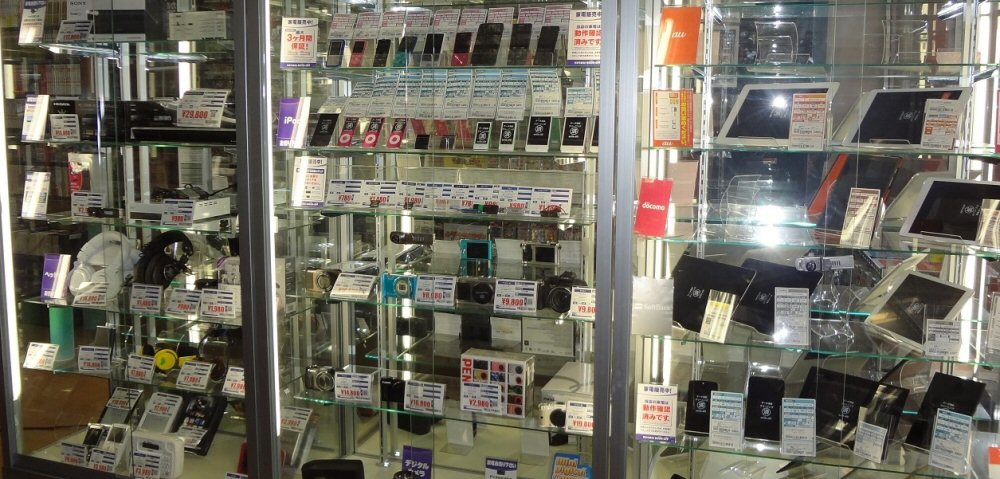Great Resignation Hustle: Create a Cache Distribution Network

A lot of people are talking about the Great Resignation nowadays. They want to do something different as a career or as an entrepreneur. These people are right in their thinking – we are living in a new paradigm and had our lives disrupted by a pandemic. You and everyone else know it is time to start thinking new, thinking fresh, and pursue a new direction in your life.
One issue we experiencing is we do not have good guidance because the corporatists do not want the people to be innovative. The corpos want us working jobs. Then we see clickbait articles written by people who obviously don’t have good jobs to talk on the subject because they have to work as clickbait writers.
Luckily this article is not written by a cornball clickbait writer. This article is written by a real technology expert – consider me one of your chooms. The future-facing platform like Toshikiso and the technology we work on give us actual insight on what opportunities are truly needed and out there. One thing that many people don’t realize is we live in a digital service economy. Enterprises need access to specialized data, need specialized treatment of data and level of reliable service as well as global scaling capacity.
You have a lot of outdated hucksters like Max Maxwell and Jay Morrison talking about buying property, buying land but don’t realize virtual, digital data is more profitable than physical property and the reason is obvious. Digital data is always in transit and transactional meaning it can scale in volume and revenue. This is why you seeing a mad dash right now by big tech to build digital data centers around the world.
You can actually build a data center or you can rent space in a data center or you can go serverless by using white-label cloud-based platforms to launch a data service business. It is not really hard to set up; quiet Black nerdy millionaires have been made using this model since the 1990s Black-owned dial-up ISP servers in a corner store in a city. Today, a data service business very big in demand is a cache network distribution service. We are going to talk about that business in this article.
What is a Cache Distribution Network?
A cache distribution network is similar to what many people know as a content distribution network or CDN. In the early days of the web, a content distribution network model would store the saved HTML file of a website on servers around Internet hub servers around the world. The architecture allows an Internet user has fast access to the closet Internet hub instead of going through “hops” to reach a faraway Internet hub to load a page. So, someone in Alaska doesn’t have to go through multiple “hops” to reach a website hosted in Florida, instead, they are pulling a static website stored on a content distribution network hub hosted in Alaska.
Later, media like streaming media needed to be distributed using this same concept. If you have a paid streaming media service, you cannot host downloading media from one server, you had to distribute the music/video streams to thousands of digital distribution hubs to accommodate a growing user base. The technical term for this is the same as a downloading software site – a mirror. You would mirror or copy the same media file on several servers and use a routing service to map the user Ip address to the closet hub to download or stream media.
Today, there is a need for real-time fast access data. There need to be IoT access to the current state of city assets, there needs to be faster data on asset trades last bid/ask prices as well as trending data. There is also a need to have more dynamic websites that can post data and present data very fast. This is where in-memory or solid-state caching comes into play. In the old days, they would tell you to build a website that has a database connection string to read/write data to your backend database. Today, microservices and IoT do not go directly to databases, they go directly to solid-state or in-memory cache stores to set data and get data. As a last resort if the data is not in the cache, then as a backup, the data is pulled from the database but stored in the cache for faster retrieval.
How a Cache Distribution Network Works
You can set up a cache distribution network by offering fast access to customer data using a key/value or NoSQL system. Think about this Dream and Hustle article – in order for me to present this article to you, I would have to make several API calls to Toshikiso and Kolin-Avers to pull information from several tables from a database – author information, article, media information and these are rows and columns that need to be searched and retrieved from a database of hundreds of thousands of rows and combined to present this as one article. If a dozen people search for an article, this is fine but if the article gets popular and millions of people trying to load it and calling the database at the same time, the servers will be overloaded and cause a possible crash and no service. WordPress has a major problem with this.
Now with a cache distribution network, when someone retrieves this Dream and Hustle article with an address ABC123 for the first time, the entire data model will be converted to a JSON value and given an address like ABC123. Then we move this data to a key/value cache. When others come to read the same article, the service look into the cache for ABC123 returns the value of a JSON object and delivers the article without any database looking causing us to have faster article delivery and better handling of a lot of traffic.
This is a major business need for SMEs and especially for e-commerce during periods such as Black Friday. The product pages can all be cached in memory. When a customer rushes to order limited runs of a drop culture product, they don’t all get website glitches or frozen screens. What will happen is their session data will be cached and have faster retrieval to continue the checkout, payment, and confirmation section. As you see, this is a big opportunity and need as more and more people are moving to online orders.
How to Setup a Cache Distribution Network
To set up a cache distribution network as your Great Resignation Hustle, you can do these several ways and can do it very cheaply. The first and easiest way – use the cloud platforms like AWS and Azure to host a cache server like Redis. The drawback is those cache services on the cloud are pretty expensive so you have to charge more than you paying the cloud services and then bill the client. If I’m correct Azure has a setup where they will bill the client on your behalf.
The other way is to host in a data center but you are physically building out servers and have to build out in hubs. You going to have to start small and grow over time as your profits allow you to re-invest in more hubs for more revenue. If you going to do it this way, I recommend you focus more on solid-state drives and host niche data solutions for the industry.
What do you offer to cache and for what industry? You can cache account profiles in JSON format for membership services when a person scans their badge. This information can be encrypted on your servers and decrypted when doing a lookup using the customer own public/private key pair. You can cache account balance information to make quick payment decisions or cache social credit score numbers to help businesses determine if a potential customer is low-quality. Can cache product information for an e-commerce site so users can order food, buy clothes with a website that can handle heavy traffic.
What Does a Cache Network Distribution Look Like?
You set up computers with large RAM memory to host a Redis server or any key/value database or cache server to host data in memory. Then someone can access quickly cached data that is needed in real-time like a stock quote or weather forecast. The format will be a key like DBEXX_234234 and the value will be the JSON stock data for a crypto-corporation that can be returned almost instantly.
A second option is storing an array of solid-state drives for fast access to a little bigger but still small files. These are articles and content that can also be distributed but you can also fit a podcast distribution as well depending on the size and time. You would setup a NAS or networked access storage and rent it out for companies to store their distributed data and use an URL to access it through an API service. View the link on the top image of this article to see what the URL will look like as that image is coming from our Kolin-Avers service.
This is a Major Need that Requires Little Startup Resources
Nobody is going to scale up and scale big without having their data distributed around Internet hubs to reach their global audience efficiently and deliver content with speed. We are way beyond static web pages, we need digital media distributed and small reusable data distributed like a weather forecast, top headline news to stream on a local news ticker, or stock quotes.
For our firm, we are going to need Kossier account profiles stored as JSON files near hubs where our users have done a check-in so we can quickly deliver their profiles in the areas they frequent. So trust me, you see a whole bunch of opportunities where data need to be on-demand and retrieve in near real-time to have that level of data performance needed. Meaning, this is a service that will be needed by plenty of people in this new paradigm shift.
You can easily get started with a free cloud account or you can start up your own small cache distribution farm. You can bill on a per-access basis by simply using the Internet log files showing what data requests were pulled and generate invoices to pay using an online payment processor. You don’t need to buy real estate and expect monthly rental payments like these outdated cornballs, a small server in a small space will generate serious revenue of hosted data caches and that’s where the future is at.
I hope you think of these kinds of opportunities that are ahead of us and you don’t need to be working at some job you don’t like or don’t want to see those fake co-workers who never called and checked on you since last March 2020 when everything got locked down. You are right in your own belief to do something new, something fresh. Don’t let corporate media and the corpos try to convince you that you have to return to your old job to lift up their corporate profits. Even if you do go back to work, look at side hustles you can set up and get going, this should be one of them to consider.























